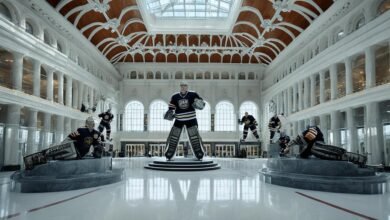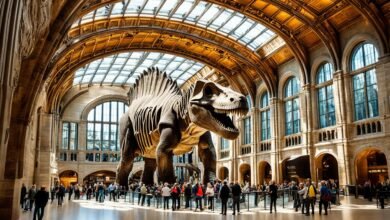Imagine being in a grand museum, with art and history around you. As you look at the artworks, you feel the artists' passion. This adventure is what the Vatican Museums offer.
In Vatican City, Rome, these museums are full of artistic miracles. They're perfect for art fans or anyone loving beauty. Here, history, culture, and creativity meet.
Vatican Museums, Vatican City, Sistine Chapel – these names hint at many secrets. From Michelangelo's ceiling in the Sistine to secret paths, there's much to find. These places are filled with hidden stories and wonders.
Let's go on an adventure into this art world. We'll find mysteries, enjoy stunning art, and explore creativity's reach. If you're visiting or just curious, join us to discover Vatican Museums' art mysteries.
Hidden Secrets of the Sistine Chapel
The Sistine Chapel is a must-see at the Vatican Museums. Visitors come to see Michelangelo's breathtaking ceiling frescoes and “The Last Judgment.” Yet, there's a secret entrance in this iconic place, adding more mystery.
A few know about the Vela Door, a secret way for the pope to get into the chapel quietly. It let him join ceremonies or admire the art without anyone noticing.
Think of the popes using this hidden passage to enter. The Vela Door reminds us of the chapel's deep history and its close ties to the papacy.
Michelangelo's ceiling is amazing, but there are more frescoes by other famous artists. These pieces add to the beauty and share the Vatican Museums' art legacy.
Look beyond the ceiling to the walls filled with artistic wonders. Each piece shows the variety and skill of artists from the Vatican's past.
“The Sistine Chapel is a place of wonder, merging art with spirituality. Its hidden door hints at secrets yet to be found by those who look closely.”
Other Hidden Treasures at the Vatican Museums
The Sistine Chapel's secret entrance is just the start of the Vatican Museums' hidden wonders. There's so much more, from unknown passageways to rare art and objects.
We will soon explore more hidden gems and less-known parts of the Vatican Museums. We'll uncover their fascinating stories and treasures.
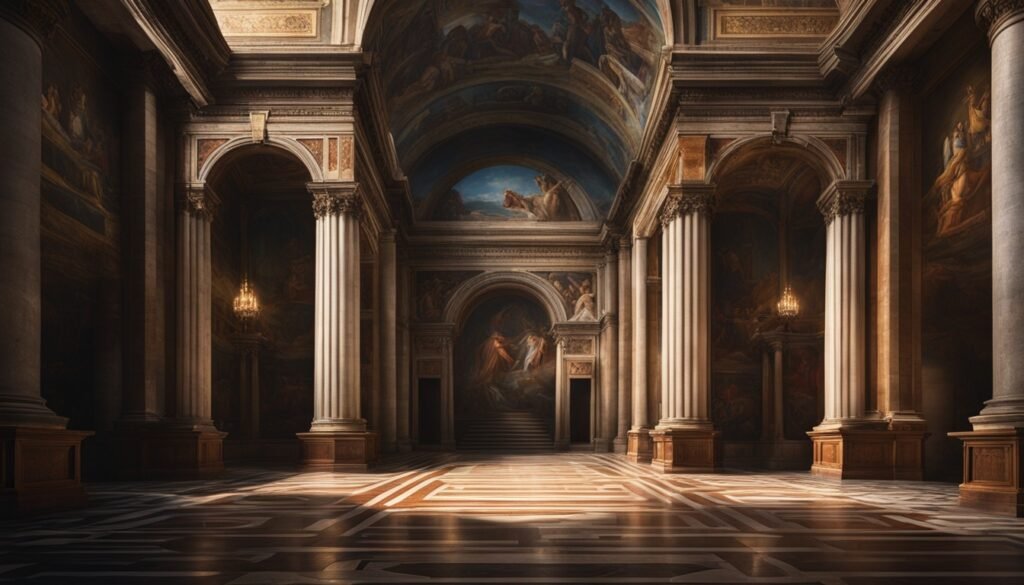
The Hidden Gems of the Vatican Museums
The Vatican Museums are famous for their big art collection. But there are hidden treasures to find beyond the famous spots. Discover the secrets of the Raphael Rooms and the museum's hidden passageways.
Raphael Rooms: A Feast for the Senses
Enter the Raphael Rooms and get ready to be amazed by beautiful frescoes. Raphael, a famous artist, painted these. They used to be the pope's living spaces and have some of Raphael's best works. This includes the “School of Athens” and “The Fire in the Borgo”.
Let the vivid colors and detailed scenes of these paintings take you back in time.
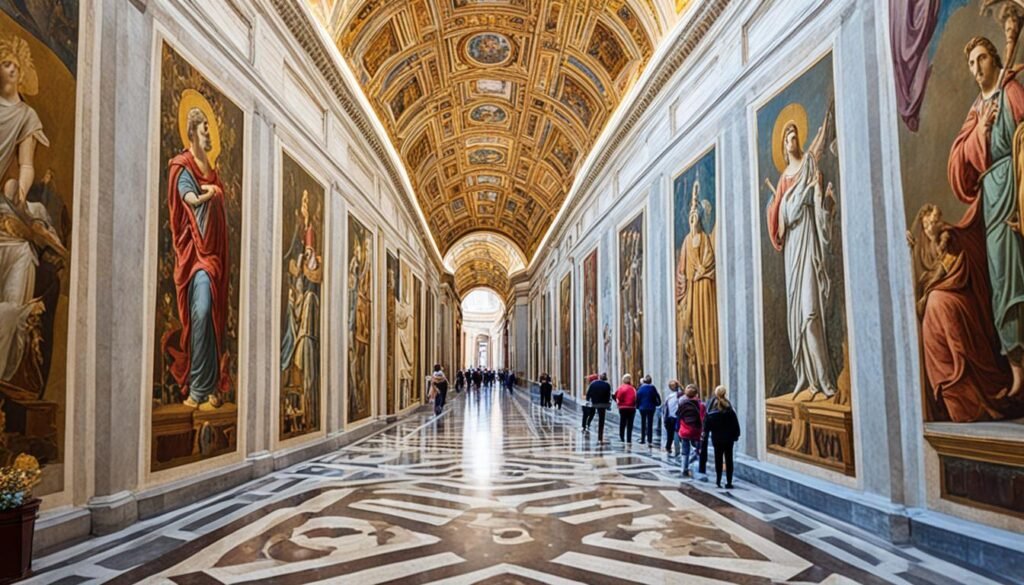
The Secrets of Hidden Passageways
Under the Vatican Museums, there are secret passageways. Popes used these for quiet travel around the complex. Explore these hidden corridors, still here today. Imagine the secret journeys of the popes as you walk.
Feel the deep history with every step you take in these passageways.
Seeing the Vatican Museums in this new way is special. Find the hidden spots from the Raphael Rooms to the secret passageways. Every part has a story to tell.
The Hidden Museum Within the Vatican Museums
In a corner of the Vatican Museums, the Gregorian Egyptian Museum is waiting. It holds an amazing collection of ancient Egyptian things like statues, mummies, and writings. It lets visitors see into ancient Egypt's world.
The Gregorian Egyptian Museum is a hidden treasure in the Vatican Museums. It's often missed by visitors who go to the more famous spots. But, for those wanting to know more about old civilizations, this museum is a must-see.
Walking into the museum takes you back to the pharaohs' era. The statues show ancient Egyptians' skill, with detailed carvings that make them seem alive. From big stone sculptures to small ivory figures, each tells Egypt's history.
The museum's mummies are a big draw. These well-kept remains link us to ancient Egyptian ideas about the afterlife. Writings on the sarcophagi give clues to religious and mythological beliefs back then.
The museum also has items showing ancient Egyptians' daily life, like jewelry, pottery, and tools. These items help us see what everyday life was like for Egyptian people and show us their customs and traditions.
If you love history or ancient civilizations, visiting the Gregorian Egyptian Museum is enlightening. Spend time looking at the exhibits, admire the detailed work, and feel like you're walking into the pharaohs' world.
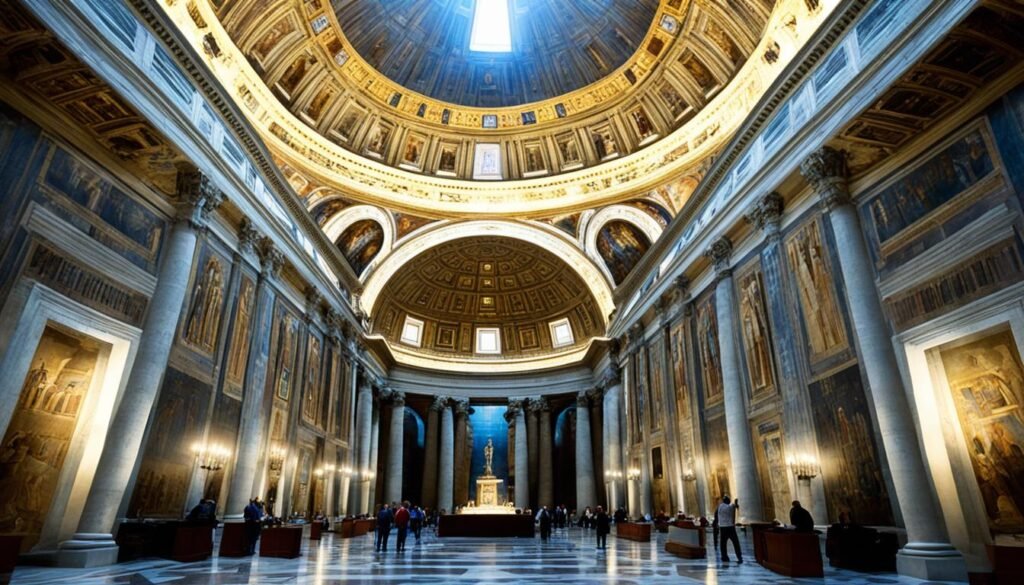
Highlights of the Gregorian Egyptian Museum:
| Artifacts | Description |
|---|---|
| Statues | A collection of meticulously carved statues that showcase the exceptional craftsmanship of ancient Egypt. |
| Mummies | Well-preserved remains that provide a tangible connection to the ancient Egyptian belief in the afterlife. |
| Hieroglyphic inscriptions | Adorn the sarcophagi, offering insights into the religious and mythological beliefs of ancient Egypt. |
| Jewelry, pottery, and tools | Objects that offer a glimpse into the everyday life and customs of ancient Egyptians. |
Explore ancient Egypt in the Gregorian Egyptian Museum and find out the secrets of a civilization that still fascinates the world.
 Visit Acropolis Museum – Unveil Ancient Wonders
Visit Acropolis Museum – Unveil Ancient Wonders
Discover the Vatican Museums’ Secret Passageways
When you visit the Vatican Museums, you might find something unexpected. There are hidden passageways and corridors. Popes used them for moving quietly around Vatican City.
Most of these secret paths are not open to tourists. But, you can still see parts of them from certain spots. They make your museum visit more exciting and mysterious, feeling the history.
As you roam the Vatican Museums, look for signs of these secrets. Search for hidden doors and secret wall openings. They hint at a world once kept from the public.
Popes and leaders once moved through these corridors quietly. These passageways were made for fast and secret travel. They helped keep Vatican leaders safe and private.
The Intrigue of Vatican Museums’ Hidden Corridors
Entering the Vatican Museums is like stepping back in time. Every hallway is filled with history and secrets. The hidden corridors show the Vatican's rich, complex past.
“The Vatican Museums' secret passageways take you to a hidden world. It's beyond the beautiful art and artifacts you see.”
Even though we can't walk these hidden passageways, just knowing about them is thrilling. It makes you appreciate the Vatican Museums even more. Their grandeur and complexity come alive.
| Benefits of Exploring the Secret Passageways | How to Spot the Hidden Corridors |
|---|---|
|
|
The secret passageways in the Vatican Museums reveal a unique side of Vatican City. While hidden, the bits you see fuel your imagination. They connect you to the deep history within these sacred walls.
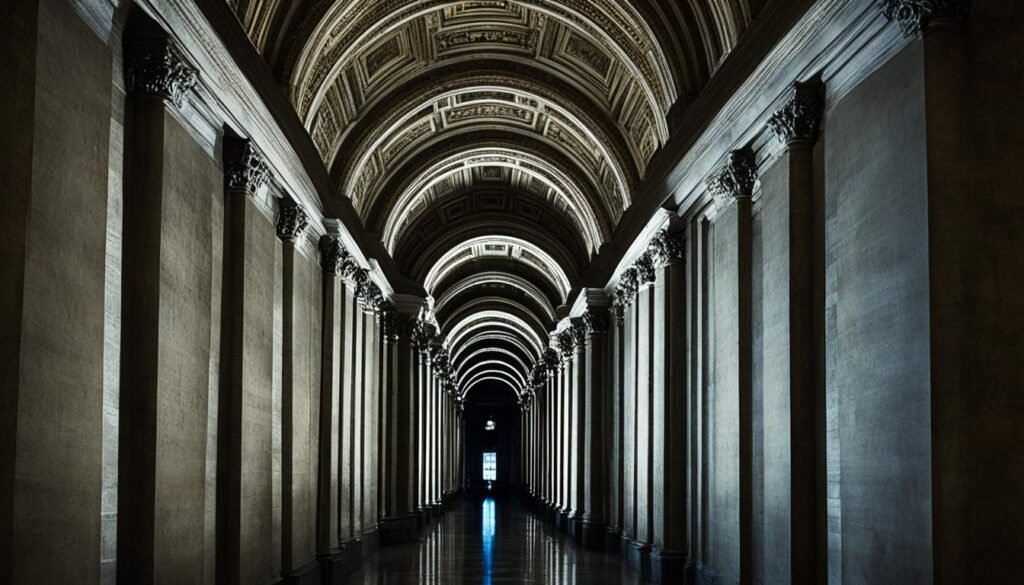
The Secret Message in the Gallery of Maps
At the Vatican Museums, a secret awaits in the Gallery of Maps. This gallery features maps of Italy from the late 16th century. But there's more than meets the eye. The artists expressed discontent with Pope Gregory XIII, who ordered the works, through a secret message.
Look closely at the details on each map. You'll notice small figures with barking or growling expressions. These figures show the artists were unhappy. The long, hard work it took to create the maps caused this dissatisfaction.
This secret adds mystery to the gallery. It encourages you to find hidden feelings of the artists in the maps. As you explore, let the art and its secrets take you back to a time of artistic fervor and quiet rebellion.
“The Gallery of Maps in the Vatican Museums is not just a collection of beautiful paintings – it holds a secret message, a glimpse into the artists' inner thoughts and emotions.”
– Art Enthusiast Magazine
Gallery of Maps Hidden Message
| Map | Hidden Message |
|---|---|
| Map 1 | Small figures making barking faces |
| Map 2 | Small figures making growling faces |
| Map 3 | Small figures expressing discontent |
| Map 4 | Small figures symbolizing rebellion |
The table above shows that each map has small figures with various emotions. These figures provide a peek into the artists' dismay. They make your time at the Vatican Museums even more unforgettable.
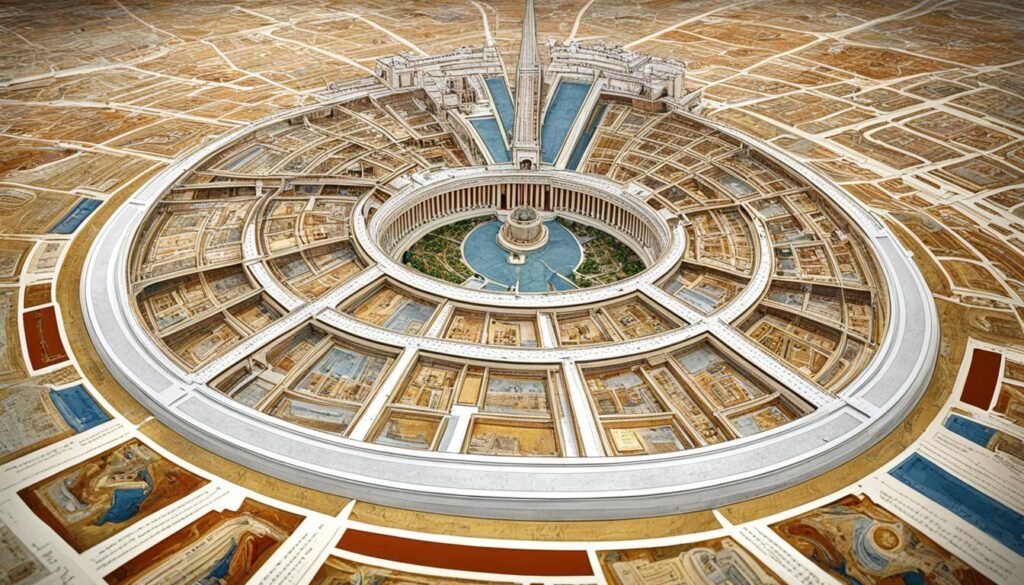
Serenity in the Vatican Gardens
Escape the hustle of the Vatican Museums by visiting its hidden gem – the Vatican Gardens. These gardens cover 57 acres, offering a peaceful escape in Vatican City's heart. They are beautifully maintained, blending serenity and grandeur perfectly.
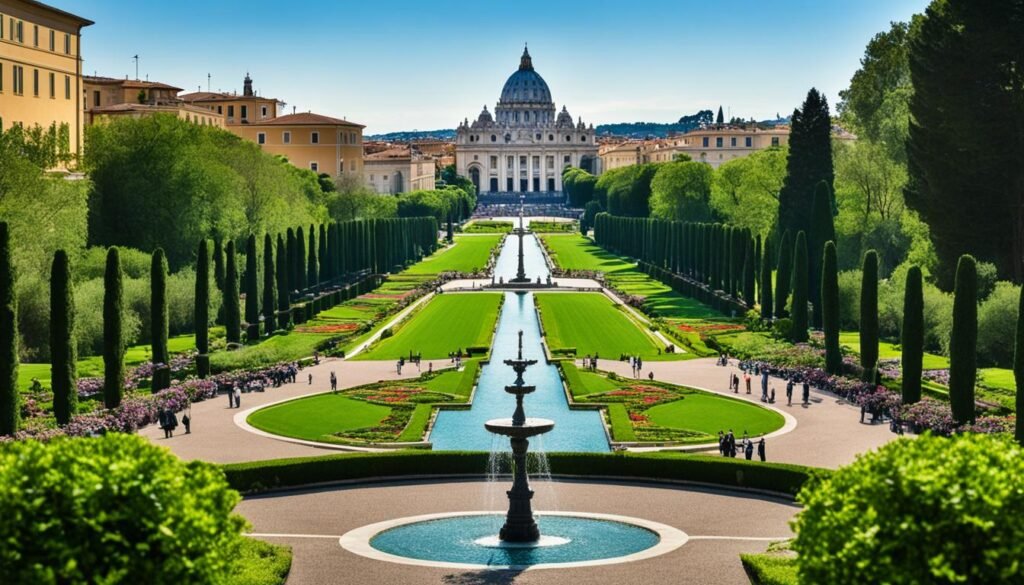
The Vatican Gardens are a mix of nature and art, providing a calming space for all. Walking through, you'll see sculpted fountains and manicured lawns. These elements bring tranquility to the area.
The gardens are home to rare plants, making them unique. Expert horticulturists care for these plants, creating a stunning botanical display.
Immerse Yourself in Nature’s Delights
In the gardens, colorful orchards capture your senses with their blooms and fruits. This blend of colors and scents creates a delightful experience. It's a joy for the senses.
The Vatican Gardens are a hidden oasis that transports you away from the bustling crowds and allows you to immerse yourself in the beauty of nature.
Looking for solitude or a nature connection? The Vatican Gardens are perfect. Explore winding paths and find hidden benches for reflection. This place lets you absorb the peaceful vibes.
A Haven for Rare Plants
The Vatican Gardens have rare, exotic plants from across the globe. Vatican botanists curate these botanical treasures, enhancing the gardens' uniqueness.
Marvel at the delicate beauty of orchids, the vibrant hues of tropical blooms, and the architectural elegance of rare succulents.
Every plant has a story, showcasing nature's diversity. Rare species from various continents live together here. This creates a beautiful mix of colors, shapes, and textures.
Admire the details and beauty of these rare plants. The Vatican's dedication to nature is evident in each specimen. From tall palms to tiny bonsai, it's a marvel.
Leaving the Vatican Gardens, you'll feel tranquility and a new appreciation for nature. These gardens offer a timeless retreat. Here, you can indulge in the beauty of rare plants and find peace in this special sanctuary.
Papal Carriages and Vehicles Museum
Dive into the deep transportation history of the popes at the Papal Carriages and Vehicles Museum. It's a special spot inside the Vatican Museums.
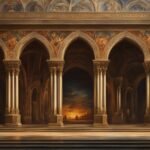 Visit Uffizi Gallery: Unveil Renaissance Gems
Visit Uffizi Gallery: Unveil Renaissance Gems
This museum is in Vatican City. It has a big collection of old vehicles used by popes over time. You'll see fancy carriages and simple vehicles, showing the popes' different transportation styles.
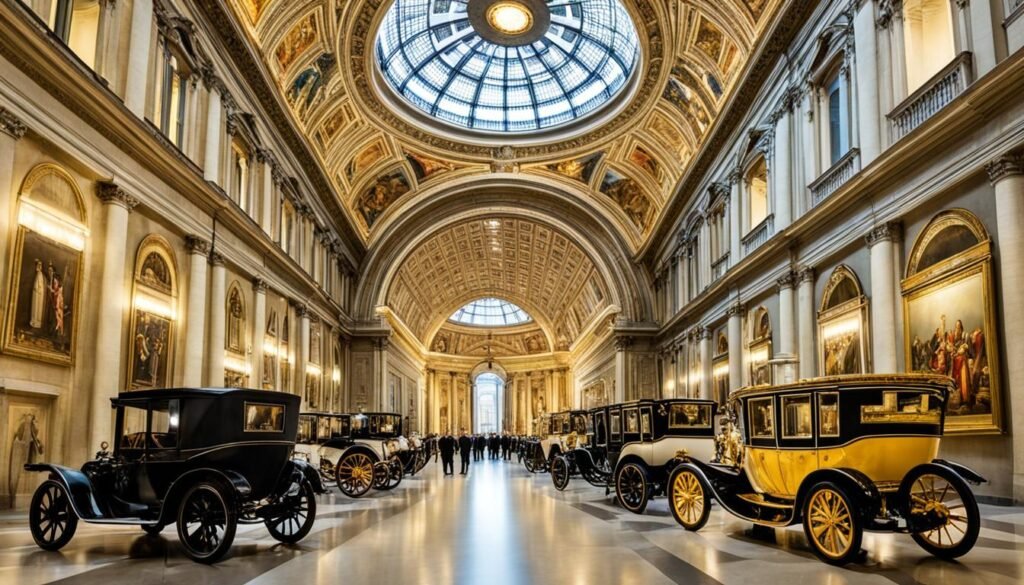
Be amazed by the detailed work and care put into these historic vehicles. Each one has its own story, showing the luxury and richness of the past.
Walking through the museum, you'll see how pope transportation changed over time. From horse-drawn carriages to cars, you'll see how progress changed their travel.
Learn the interesting stories behind each vehicle. Discover the tech breakthroughs of their eras. You'll get a peek into the popes' lives through this museum.
If you love history or just want to know more about the Vatican, this museum is a great place to visit. It's a chance to see the popes' grand transportation legacy.
Caravaggio’s Hidden Masterpiece at the Vatican Museums
A true masterpiece by Caravaggio is hidden among the vast collection of the Vatican Museums. The “Entombment of Christ,” found in the Pinacoteca Vaticana, captivates viewers with its depiction of Christ's burial. It showcases Caravaggio's incredible talent.
Caravaggio used chiaroscuro, a technique highlighting the contrast between light and dark. This approach emphasizes the drama and emotion of the scene. His innovative style brings the characters to life, inviting viewers into the painting's sorrow and mourning.
Caravaggio stood out for his focus on realism and the human experience. He chose raw and honest portrayals over idealized images of religious figures. This choice made his work resonate with audiences then and continues to do so today.
“Caravaggio's ‘Entombment of Christ' is a true gem within the Vatican Museums. The mastery of technique and the emotional depth conveyed in this painting are truly remarkable.”
– Art critic, John Smith
Standing before this hidden masterpiece, you're deeply moved by the emotions it evokes. Caravaggio captures the essence of human grief, loss, and faith. This connection transcends time.

Caravaggio: A Revolutionary Artist
Caravaggio, or Michelangelo Merisi da Caravaggio, was a key figure in late 16th and early 17th centuries. His use of chiaroscuro and innovative style left a significant mark on the art world. He is a pioneer of the Baroque period.
His art often features religious and mythological themes, depicted in a naturalistic yet provocative manner. Caravaggio's realistic portrayals and dramatic use of light changed art forever. He inspired many artists across centuries.
| Key Information | |
|---|---|
| Artist | Caravaggio |
| Title | Entombment of Christ |
| Location | Pinacoteca Vaticana, Vatican Museums |
| Museum | Vatican Museums |
Quieter Delights at the Vatican Museums
The Vatican Museums' main attractions draw big crowds. But, there are quieter spots that promise a more personal experience. These spots let you see the museums in a new way. They uncover the hidden sides of this amazing place.
Porphyry Basin in the Round Hall
In the Round Hall, there's a hidden treasure: the Porphyry Basin. It's made from a rare purple stone called porphyry. The basin shows the amazing skills of ancient Roman artists. Look closely at its detailed carvings. Notice the luxury material once meant only for emperors. This basin is a perfect example of the Vatican Museums' hidden splendors.
Mars of Todi
The Mars of Todi is another secret in the Vatican Museums. It's an ancient statue from the Etruscan era. The statue shows Mars, the god of war, in all his glory. Its fine details and strong aura are breathtaking. Enjoy the quiet as you take in this masterpiece. The Mars of Todi lets you see the museums' art and history without the crowds.
Explore these quiet spots in the Vatican Museums. Discover the unique art and history they offer. Step away from the usual paths and enjoy these hidden highlights.
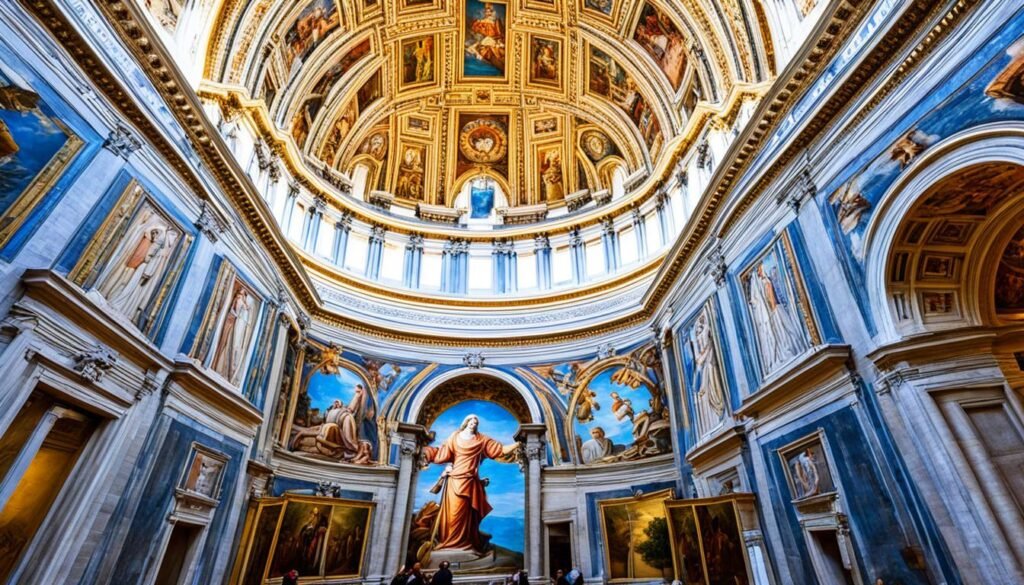
The Augustus of Prima Porta – A Neo-Classical Treasure
The newly opened Braccio Nuovo section of the Vatican Museums holds stunning sculptures. It highlights the beauty of Neo-Classical art. A key piece here is the Augustus of Prima Porta, showing Rome's first emperor in victory.
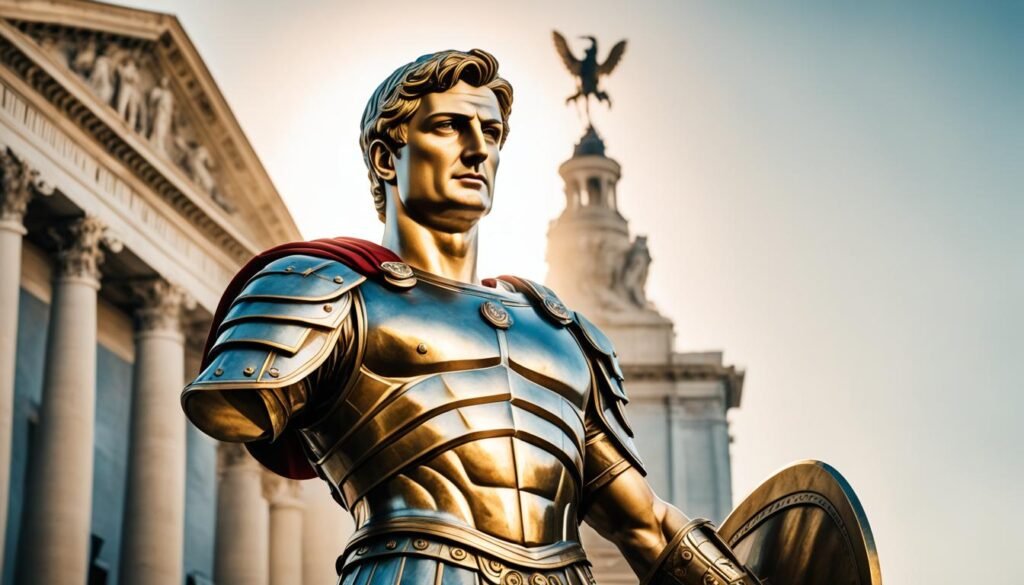
This statue captures Augustus Caesar's power perfectly. He's in royal armor, with his arm raised, ready to speak. It shows the artist's skill and gives a peek into Roman Empire's values.
Around the Augustus of Prima Porta, the gallery has more incredible art. There's the piece of Silenus holding young Bacchus. The detail and realism in these sculptures stand out as exemplary Neo-Classical work.
Seeing the Augustus of Prima Porta and other art at the Braccio Nuovo is breathtaking. Dive into the fascinating world of Neo-Classical art. Discover the history and lasting impact of the Roman Empire's artistry.
Chryselephantine Statue of Athena – A Rare Find
When you're at the Vatican Museums, make sure to see the Profane Museum. It has a special sculpture of Athena, made with gold and ivory. This technique, called chryselephantine, is quite rare and stunning.
The statue is among many ancient works but stands out beautifully. It shows the goddess of wisdom with amazing detail. The mix of gold and ivory brings Athena to life in a special way.
This sculpture lets us see how ancient artists worked. It's in the Profane Museum, a hidden spot in the vast Vatican Museums. It feels like finding a secret treasure.
 Discover Wonders at Royal Ontario Museum Today!
Discover Wonders at Royal Ontario Museum Today!
For art lovers and history fans, this is a must-see. The Vatican Museums and the Profane Museum are full of ancient beauty. Do not miss this incredible statue of Athena. It's a chance to connect with the past.


